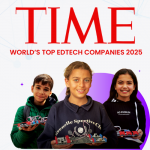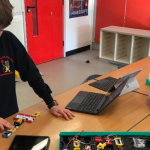Writer: Alpay Sabuncuoğlu
Child Computer Interaction Researcher
In this article, we have provided a brief interpretation of a thirty-page long research paper. Of course, some information is lost during the summary process. Link to the study will provide access for those who want to learn more about this valuable information: Link
We are all trying to choose the right educational applications for our children’s social, cognitive, and emotional development. Choosing these apps is a challenging process, not only does Apple’s iOS App Store have 270,0001 educational applications, the number of these apps grows by 5% monthly. In order to excel and take a responsibility to deliver the right solutions, application developers should remember the educational elements and inform their decisions with the science of learning.
In the article, “Putting Education in Educational Apps: Lessons from the Science of Learning”, Hirsh-Pasek et al. guide educational app and content developers with the principles from the new science of learning. The new science of learning is beginning to provide knowledge to improve significantly people’s abilities to become active learners who seek to understand the complex subject matter and are better prepared to transfer what they have learned to new problems and settings. This newly minted field asks not merely what we should teach children— that is, what content—but also how children best learn the strategies they will need to cope flexibly and creatively in a 21st-century world3.
The article introduces four pillars of developing educational mobile experiences:
- Active Learning: Mental and physical activeness of the student.
- Engaged Learning: Keeping the student’s focus during the educative event
- Meaningful Learning: Introducing students to the science behind the subject
- Socially Interactive: Allowing active communication with peers, family, and experts of the field if necessary
The application, which is based on these four pillars, should provide the student with a space to play and gain experience. In this scaffolded experience, they should be given a space that is both wide enough to explore freely and narrow enough to follow a solid learning goal.
So, how can we put these four pillars in an educational app for smartphones and tablets?
Ideally, it is necessary to be aware of the capacity of both mobile devices and children. Additionally, we need to evaluate the advantages and disadvantages of mobile devices in different learning environments with different learning types. For example, smartphones are great devices for perceiving the environment. Thanks to all the sensors it has, we can use our smartphones as an amateur physics lab. On the other hand, children are great at questioning and exploring their physical environment, thanks to their amazing curiosity. So, If we want to teach physics, we can start by seizing the potential of both children’s and devices. Further, children can become physically active when using sensors such as accelerometers and cameras and might increase their cognitive skills by interpreting incoming data. However, in order to maintain their focus, it is vital to keep their internal and external motivations high during learning. Providing intrinsic motivation requires a quality experience; we must retain their joy of learning. Boosting external motivation is relatively easier, we can start our development process with gamification elements. Lastly, the stations on the student’s learning journey must form a logical route in sequence. All the people students meet on this route should give students active and constructive feedback.
In addition, we have a multimedia device that students already love and enjoy playing with. Mobile applications have a great potential in terms of accessibility of education; With their connection features and accessible prices, they reach places that computers cannot reach and can deliver education to any environment. This device has the potential to have a great impact on our entire lifestyle with increasing mobility and information availability which will naturally affect our learning styles. Therefore, educational application developers have the chance to meaningfully affect our lives and contribute to bringing education to the whole world with the new science of learning.
1 January 2020 Numbers
2 Putting Education in Educational Apps: Lessons From the Science of Learning
3 Benassi, Overson, & Hakala, 2014; Golinkoff & Hirsh-Pasek; Pellegrino, 2012; Pellegrino & Hilton, 2013; Sawyer, 2006



